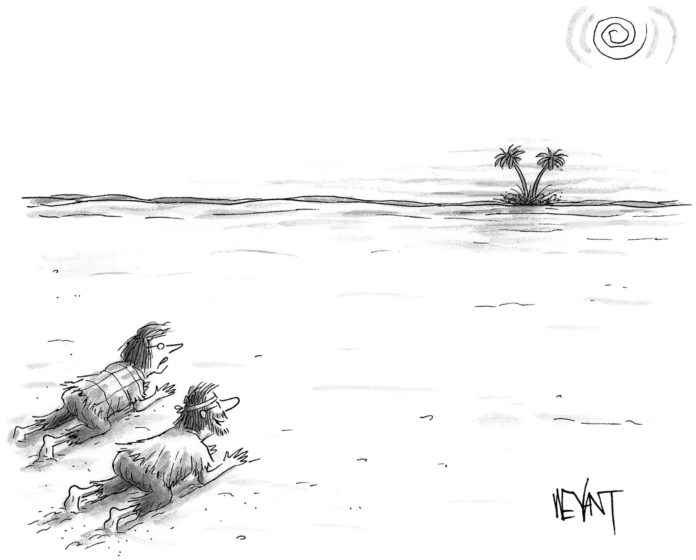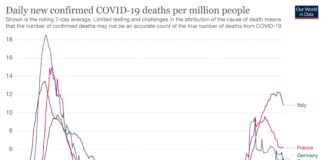Who did he have sex with? In his early years, there were relationships with older men who loved him for his charm and his talent, and didn’t mind supporting him, but that phase ended eventually. Around 1952, he met the person who was probably the love of his life, Peter Lacy. Lacy was a handsome and dashing man from a prosperous family with Irish connections, like Bacon’s. He had been in the R.A.F., but only as a test pilot; he was a pianist, though only in piano bars. Like Bacon, he was a far-gone alcoholic, but further gone. And he was a mean drunk. He frightened people. Bacon said that, at gatherings, other guests would ask him, “ ‘Who is that awful man you’re with?’ and of course I had to say, ‘Well, I don’t really know.’ ” Lacy frightened Bacon as well. As Swan and Stevens tell it, Bacon would provoke Lacy until Lacy turned on him, beat him up, and then took him by force. At one point, he threw Bacon out of a window, an experience that the artist, relaxed by drink, somehow survived. When doing his makeup, Bacon made no effort to hide the bruises that Lacy had left on his face.
There is a painting by Bacon, “Two Figures,” from 1953, soon after the couple met, that shows two men in a desperate-looking embrace, one on top of the other. Although the work drew on an Eadweard Muybridge photograph of two wrestlers, it is widely interpreted to be a portrait of Bacon and Lacy in bed. (Lucian Freud bought the painting shortly after it was finished, hung it above his own bed for decades, and resolutely refused to part with it for later shows of Bacon’s work.) It has been described as tender; no one seems to mention the sharp teeth displayed by the man underneath. For much of the nineteen-fifties, Bacon and Lacy tried to be together. Then they tried to be apart. Lacy’s alcoholism got worse. Bacon began taking amphetamines. Lacy, who had inherited money from his father, moved to Tangier. Bacon followed him, even renting his own place there. Eventually, though, the two men gave up and stopped seeing each other.
In 1962, Bacon had a retrospective at the Tate, the most important show of his life thus far, which would confirm him as one of England’s foremost painters—perhaps even the foremost. The day it opened, Bacon sent Peter Lacy a telegram about the show’s success. The telegram that came back said that Lacy had died the day before. In Tangier, he had finally drunk more than a person can drink and stay alive. As Bacon later put it, his pancreas had exploded.
The following year, it is said, Bacon one day heard a terrible crash in his studio. A burglar had fallen through the skylight, and the painter, discovering the young intruder, ordered him into the bedroom. The two men were together for the next eight years. The story became famous—it appears at the start of the 1998 bio-pic “Love Is the Devil”—though it was widely contested by people close to Bacon, who said, sorry, the two men just met in a bar, like everybody else. The new man, George Dyer, really was a burglar, though, and, like Lacy, a sort of dropout. Unlike Lacy, however, Dyer did not have much in common with Bacon. More than twenty years younger, he was an East Ender with a thick Cockney accent, and he was not the only criminal in his family. According to a friend of Bacon’s, he wasn’t even primarily homosexual. He just knew how to be accommodating; he had learned that in prison.
In the beginning, Bacon loved just to look at George, with his wonderfully muscled forearms and his commanding nose. If you saw that nose in a Bacon painting, you knew you were looking at George. Indeed, it is said that the artist’s turn to portraiture in the nineteen-sixties was due, in large measure, to his having George to paint. (He did more than twenty portraits of the man.) Bacon also appreciated Dyer’s ability to sit in a chair in his underpants for hours on end and just pose, without fidgeting, or distracting Bacon with conversation.
That was, in part, because George had no conversation. He was innocent. It was something of a tradition, in London’s gay pickup world, that in the morning the younger man stole the older man’s watch, the heavier and more expensive the better. Dyer, after he and Bacon first slept together, instead left him the gold watch he had stolen from the man with whom he had spent the previous night. Such things touched Bacon’s heart. He liked to spoil Dyer. He paid him a salary, sixty pounds a month, for posing and doing handyman work. He also gave him money to buy a lot of expensive Edwardian-style clothes, which George was very proud of.
And then Bacon tired of him. If Bacon was drunk every night, George was drunk every day and every night, which gradually made him impotent and prone to wet his pants on people’s couches. Bacon began to wish he could unload him, a fact that did not fail to register with George. In response, George threw Bacon’s furniture down the front stairs. Later, he ripped up a number of Bacon’s paintings and set fire to his studio. He planted drugs in the studio and called the police. The court case dragged on for months.
In 1971, Bacon had a retrospective at the Grand Palais, in Paris. Nothing could have been more important for his reputation. The day before the opening, Bacon came back from a lunch and found George, who had accompanied him to Paris, drunk and incoherent, in bed with a rent boy. He eventually went downstairs, to the room occupied by the gallery’s driver, and slept in the spare bed there. In the morning, he asked the driver to look in on George. On the way upstairs, the driver ran into Valerie Beston, Bacon’s heroic handler. They found George on the toilet, leaning forward, apparently dead.
So, in a sort of appalling rhyme with Lacy’s death, Bacon received similar news on the cusp of another great triumph. If I read Stevens and Swan correctly, Bacon was both stolid (he may even have been relieved) and devastated. The hotel manager was summoned, and the situation was explained to him. Would it be possible to defer George’s death until the next morning? he was asked. Otherwise, his death would overshadow the opening. The manager, evidently the soul of discretion, agreed and locked the room with dead George inside, still on the toilet. Bacon got through the festivities—the private view, the official opening, the red carpet, the honor guard—with aplomb. Then the authorities came and took George’s body away, and the newspapers published the news. Bacon flew back to London, but he was never the same. The French autopsy determined that George had died of a heart attack, but people who knew him—including, eventually, Bacon—assumed that he had died, accidentally or deliberately, of an overdose of alcohol and pills. He had made previous suicide attempts.
In the next two years, Bacon painted four triptychs that dealt with George’s death. The first three show George in various guises. The last—“Triptych, May-June 1973”—is more confessional and more sensational. Here we are shown the actual death. In the left panel, we see George naked, on the toilet, leaning forward, almost to the floor. On the right, we see him vomiting into the sink. And in the central panel, where the Christ would go if this were a Crucifixion (which, in a way, it is), we get just George’s face, bloated and bloodshot, presumably dead. In all the postmortem-George triptychs, Bacon uses looming shadows. We seem to watch George spilling over, leaking his life onto the floor. But, in the central panel of this last triptych, there is something yet more horrible. A shadow comes to greet George that is like nothing we have seen before: huge, black, like an enormous bird.
Many people would nominate “Triptych, May-June 1973,” with its narration of George’s death, as Bacon’s most formidable painting, because it is so bluntly what his work is said to be: horrific. But I would pick the series of canvases—there are something like fifty of them—that he based on Velázquez’s “Portrait of Pope Innocent X.” In them, the Holy Father is shown in full papal regalia: cape, cap, lace-trimmed cassock. (In some versions, you can even see the throne.) And then, in place of the calm, even crafty face that Velázquez gave the seventeenth-century Pontiff, we see a screaming mouth, with a full set of sharp, vicious teeth. This is Bacon’s familiar hybrid of menace and suffering, expanded now by a mixture of shock and formality. You can see this mixture in the George Dyer triptychs, too, but there it is more studied; Bacon is working something out, getting George’s death out of his system, as he himself acknowledged. In the Popes, on the other hand, the terrible thing seems to come from nowhere, both controlled and spontaneous, ineluctable. You could be the Pope and not be able to stop it.
When Bacon was about forty, his doctor told him that if he had one more drink he would die. In fact, he lived another forty years, drinking just as much as before, and therefore was around long enough to have a “late period.” It is sometimes painful to watch. He still painted, but he had to have oxygen cannisters near him at all times in case he had an asthma attack. His fame was assured. Honors rained down on him, but now he often refused them. French intellectuals—Michel Leiris, Gilles Deleuze—had written books about him and he was proud of this, but now he shooed book writers away. He also stubbornly delayed the production of a catalogue raisonné. Many of his old friends died. Many others he avoided, including Lucian Freud. (In the words of a friend of Freud’s, “Lucian took the view that Francis’s late paintings were frightfully bad. Bacon was saying the same thing about Lucian. ‘Such a pity he doesn’t go on doing his little things.’ ”) Old pleasures, too, were lost. He had a boyfriend, but the boyfriend also had a boyfriend.
Yet the spark that had always been in him still flared up sporadically. He himself spoke of the “exhilarated despair” that underlay his paintings, accurate words to describe the sheer vigor—you could even call it delight—with which he produced his grim visions. The Pope might be screaming, but, oh, that purple and gold, and even the wit, or at least surprise, of the painting. You’re not the only one screaming about life; so is the Pope.
In 1991, during a trip to Madrid, Bacon decided that he had to see the collection of Velázquez paintings at the Prado, and to do so alone. He telephoned Manuela Mena, a senior conservator at the museum, and asked if he might come on a day when the museum was closed. This was hard to arrange—the guards were on strike—but Mena worked it out, and told him to knock on a little-used side door, next to the Botanical Gardens, at the appointed hour. She later recalled, “We opened that door for him at midday, and in with the sun came Francis Bacon.”
He was back in Madrid the following year. Eighty-two and dying, he nevertheless had a nice Spanish companion, and, in the last photograph of him that Swan and Stevens offer us, we see him at his favorite bar, sitting there with what looks like a quart-size Martini in front of him. He seems hearty; he wasn’t. Within a few days, his friend had to check him into a hospital. The supervising nurse said that he was starting to suffer from “slow suffocation.” Soon his breathing stopped, and then his heart—meat at last. ♦








